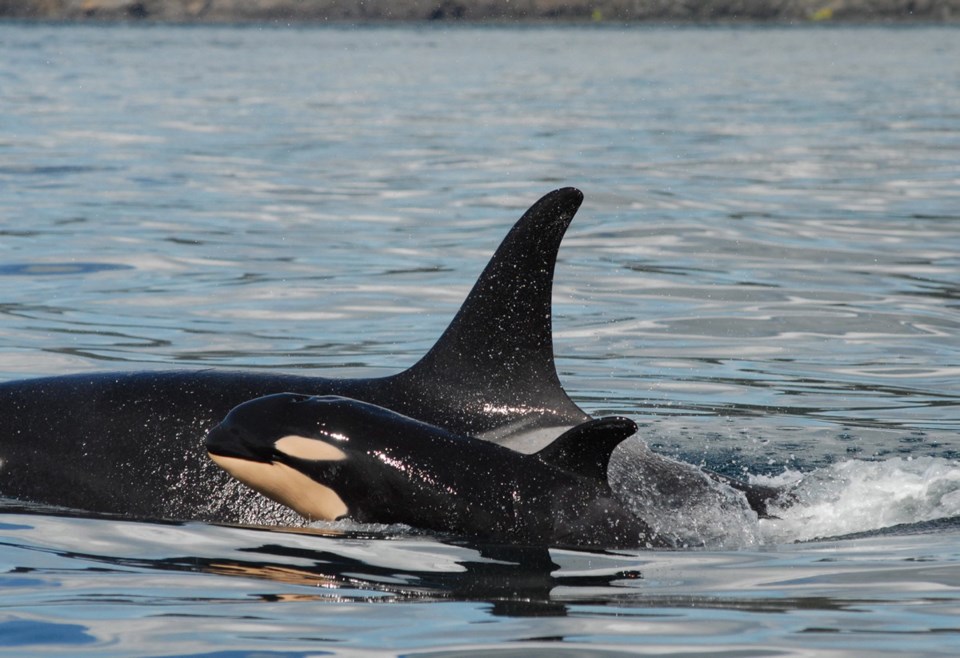A group of orca advocates is making its own plans to protect endangered killer whales, saying a federal action plan is overdue.
The group celebrated news of four calves born to the southern resident killer whales since December. But with a 50 per cent mortality rate and a slew of other threats to their survival, members say it’s time to get serious about protecting the species, which was declared endangered 12 years ago.
“What we really need is a comprehensive plan,” said Misty MacDuffee, a biologist with the Raincoast Conservation Foundation.
“We’re not expecting what’s necessary to come from [Fisheries and Oceans Canada].”
For years, the federal department has been working with outside scientists and conservationists to put together an action plan, but no date has been set for its implementation. As the first federal action plan protecting an endangered marine species, it’s expected to set a precedent for the way endangered species are treated.
Based on a draft of the plan published last year, some critics say it lacks substantive action.
“We know what the problems are. Now we actually need some action on those very urgently,” said NDP MP Randall Garrison, who convened the conservationists in a public round-table discussion.
Participants included representatives from the Raincoast Conservation Foundation, the Dogwood Initiative, Northwest Wildlife Preservation Society and South Vancouver Island Anglers Association.
Among the most glaring threats to the future of southern residents are declining food sources, noise pollution and other contaminants.
Stocks of chinook salmon, which make up about 90 per cent of the orcas’ diet, have declined by 50 per cent in the past century, forcing orcas to swim farther for food, depleting their energy and blubber reserves, according to the Vancouver Aquarium.
The whales’ ability to communicate is threatened by noise pollution, especially military activity, high-energy seismic surveys and year-round low-frequency engine noise from commercial shipping, according to Shaw Ocean Discovery Centre.
Toxins such as PBCs and PBDE fire-retardants in their food sources have made the whales among the most contaminated marine mammals in the world.
The Species at Risk registry also lists whale-watching activities, oil spills and collisions with vessels as potential threats.
While still in the earliest stages of preparing an alternative action plan, the group identified a few priorities.
One is the restoration of full funding to the Straitwatch Program, which monitors vessel activity. The program has operated only partially since experiencing an Environment Canada funding shortfall of $200,000 in 2012.
Some participants said they would pursue their own initiatives. Anglers’ coalition president Christopher Bos said work has already begun on a Sooke-area project to improve salmon stocks.
“We want to get something done right away, so we’re charging ahead with our initiative and lobbying for something material to be done in the upper Fraser River [where the salmon spawn],” Bos said.
The federal action plan is between consultation stages, a Fisheries and Oceans Canada spokeswoman said. Regional consultation has wrapped up and the latest draft will be posted online soon — she could not give a date — for national consultation.
The document will be posted to the species at risk public registry for 60 days. The action plan team will then have 30 days for revision work.
The final plan must be approved by the minister of fisheries and oceans, the spokeswoman said.
Lance Barrett-Lennard, head of cetacean research at the Vancouver Aquarium, said the 10-person action-plan team was mindful of the way the killer-whale action plan would pave the way for others.
“It’s very much a test case,” said Barrett-Lennard, who is also a member of the team. “The Species at Risk Act is still in its infancy, so where the rubber will hit the road is with these action plans.”
Paul Cottrell, marine mammals co-ordinator for the Pacific region of Fisheries and Oceans Canada, said the team ranked both research and management activities that could help the whales recover.
“The consultation process is all about getting that feedback from people who feel that it should be changed. That’s what we want to hear about — the good and the bad,” Cottrell said.
“It’s a draft, so it’s an evolving document. We want it to be the best document it can be.”
Southern resident killer whale population
Pre-1960: No official numbers, however estimates up to 200 for the late-1800s
Late-1960s to 1973: About 47 whales collected through live-capture for oceanarium displays
1980: Population increased to 83, from a low of 70
1981 to 1984: Population declined to 74 as a result of lower birth rates, higher mortality for adult females and juveniles, and lower numbers of mature males
1985 to 1995: Population increaseed to 99 animals, due to surge in number of mature individuals, increase in births, decrease in deaths
1996 to 2001: Decline to 81 whales due to poor survival, low fecundity
2001-2010: Near-stable numbers between about 80 and 85
2010-2014: Four new calves survive, 15 whales die or go missing
2015: Official number remains at 77, but cautious optimism surrounds birth of four orcas born within three months (one in Dec. 2014). They will be officially counted after their first birthdays.
— Information via Species at Risk public registry, U.S. Environmental Protection Agency, National Oceanic and Atmospheric Administration in the U.S. and Orca Network
Protecting the southern residents
1970: Killer whales protected under B.C. Wildlife Act
1982: Whales included in regulations under the Fisheries Act of Canada, which prohibited hunting without a license, except Aboriginal hunting
2003: Southern resident killer whales are designated as endangered under the Species at Risk Act
2006: Federal recovery team completes draft recovery strategy, identifying prey, pollution and acoustic disturbance as three key threats
2008: Federal recovery strategy released
2010: Federal court ruled the government is legally bound to protect whales’ critical habitat
2011: Updated recovery strategy released
2014: Draft federal action plan released for regional consultation
2015: National consultation expected on draft action plan
— Information via Species at Risk public registry, Fisheries and Oceans Canada and Raincoast Conservation Foundation



